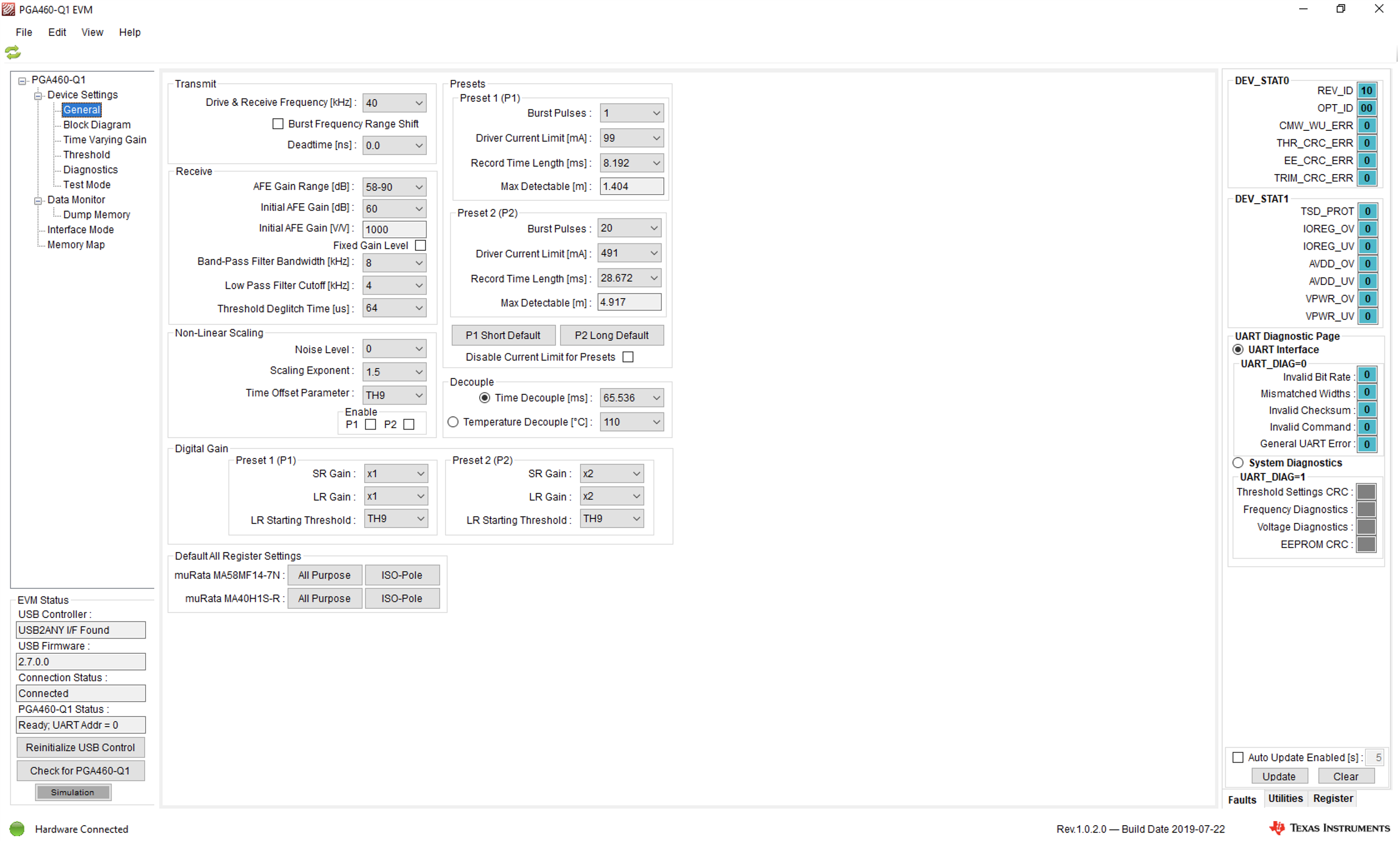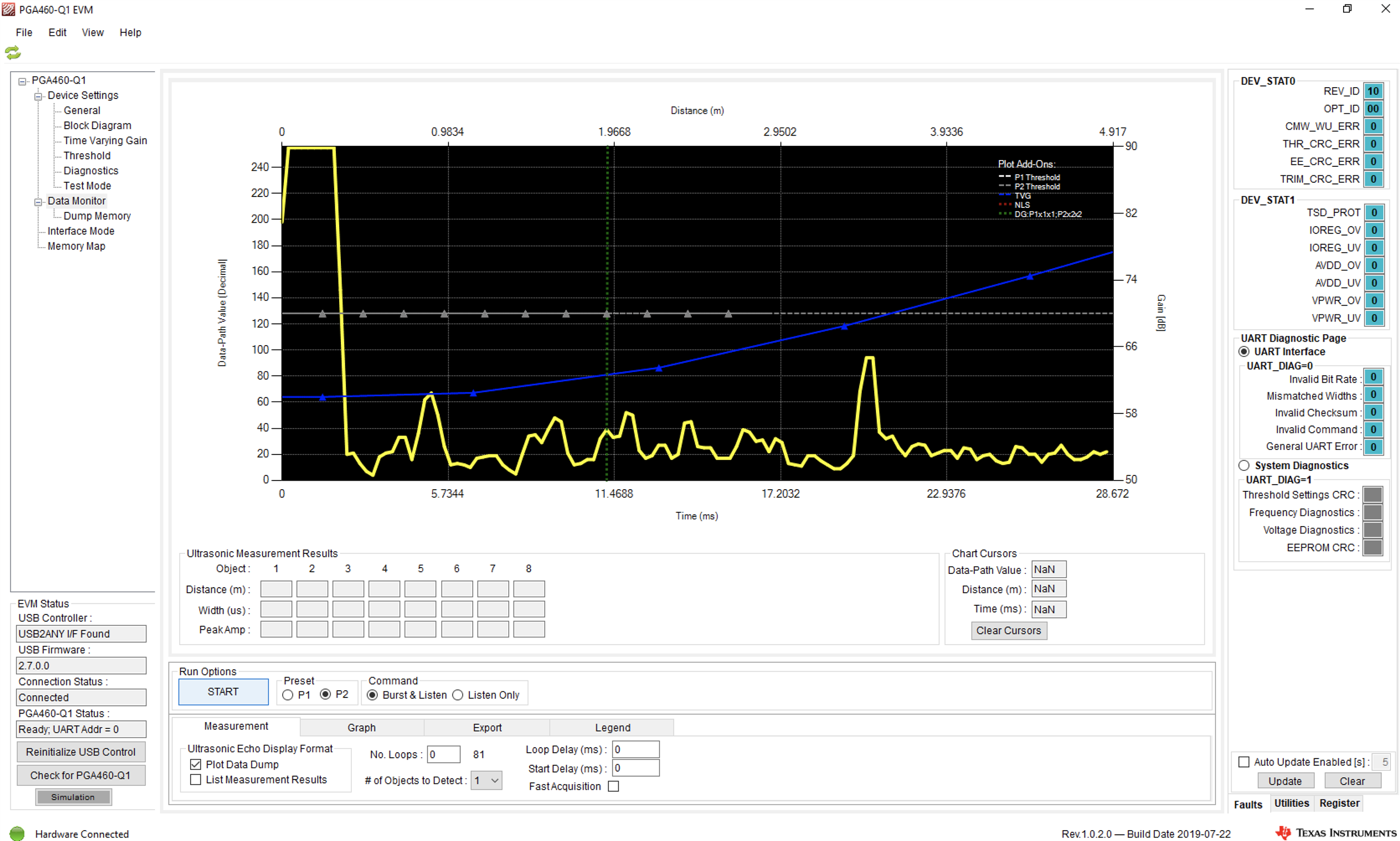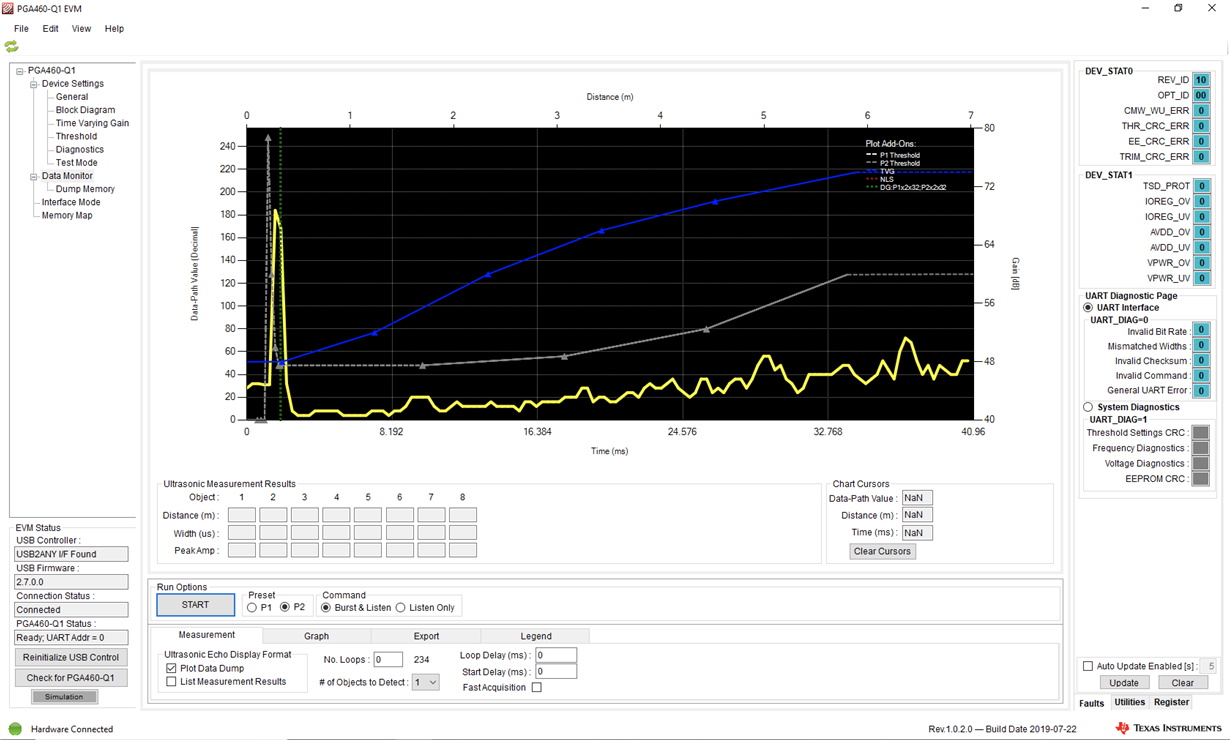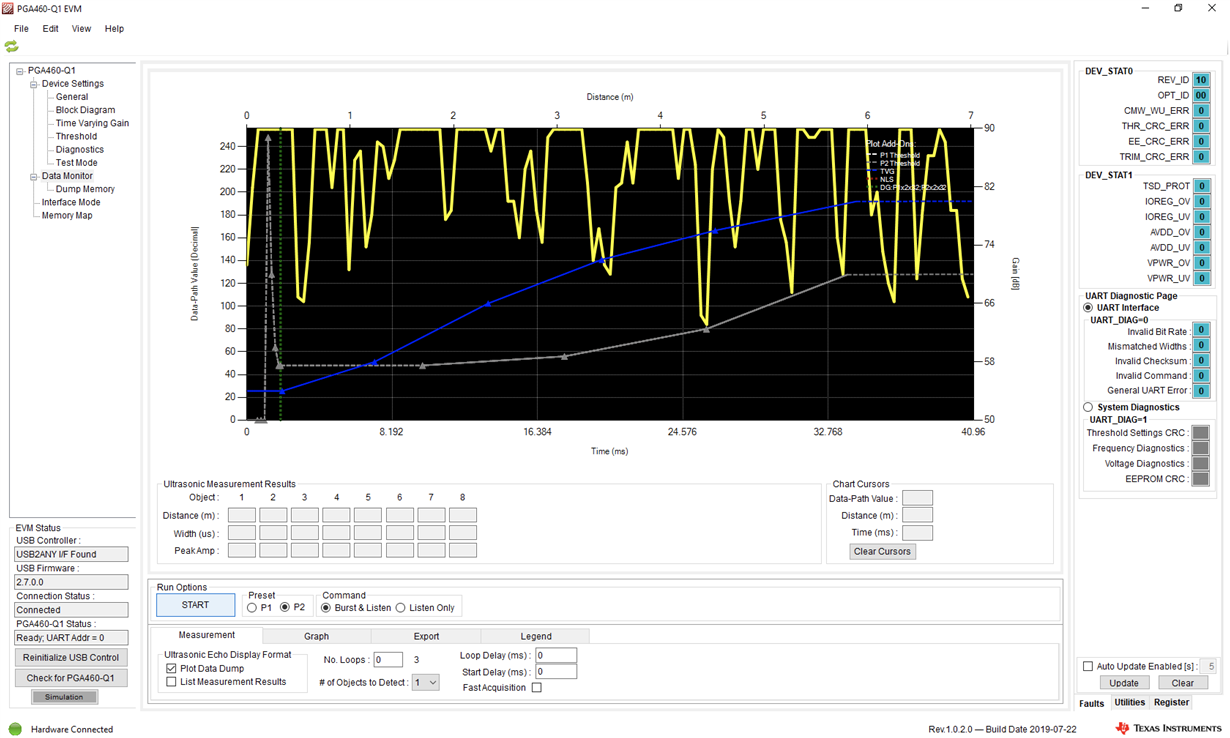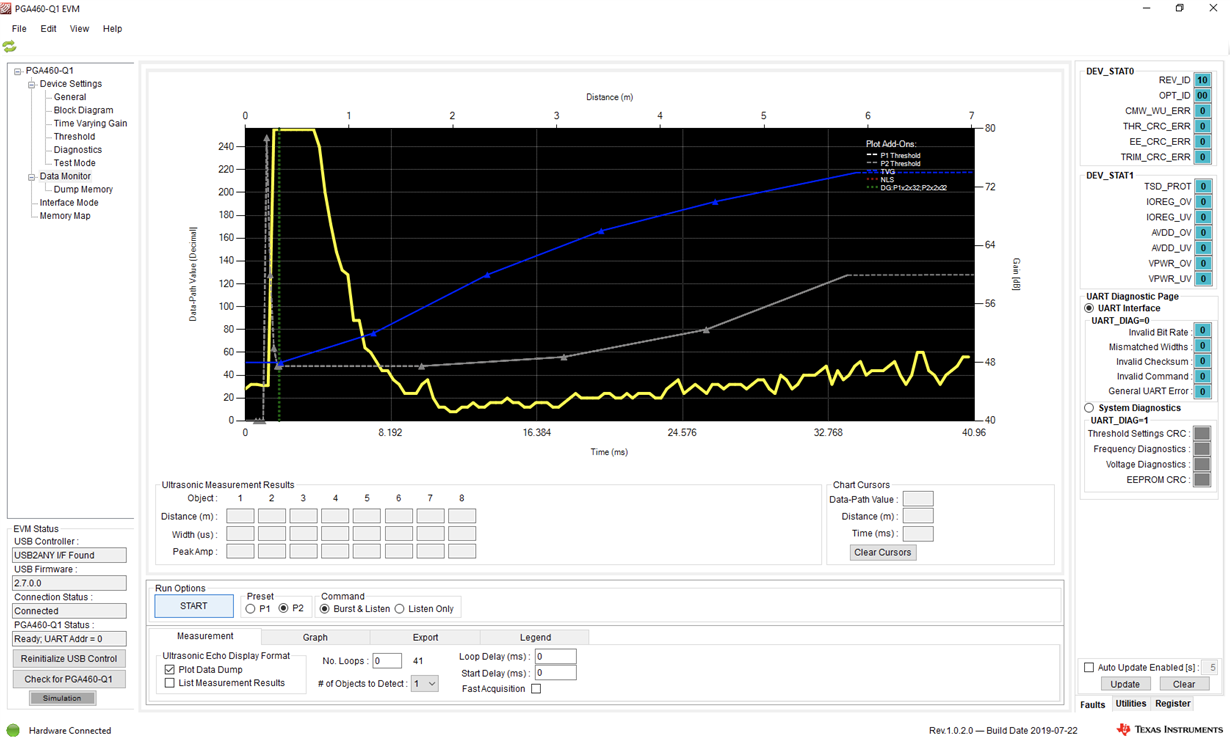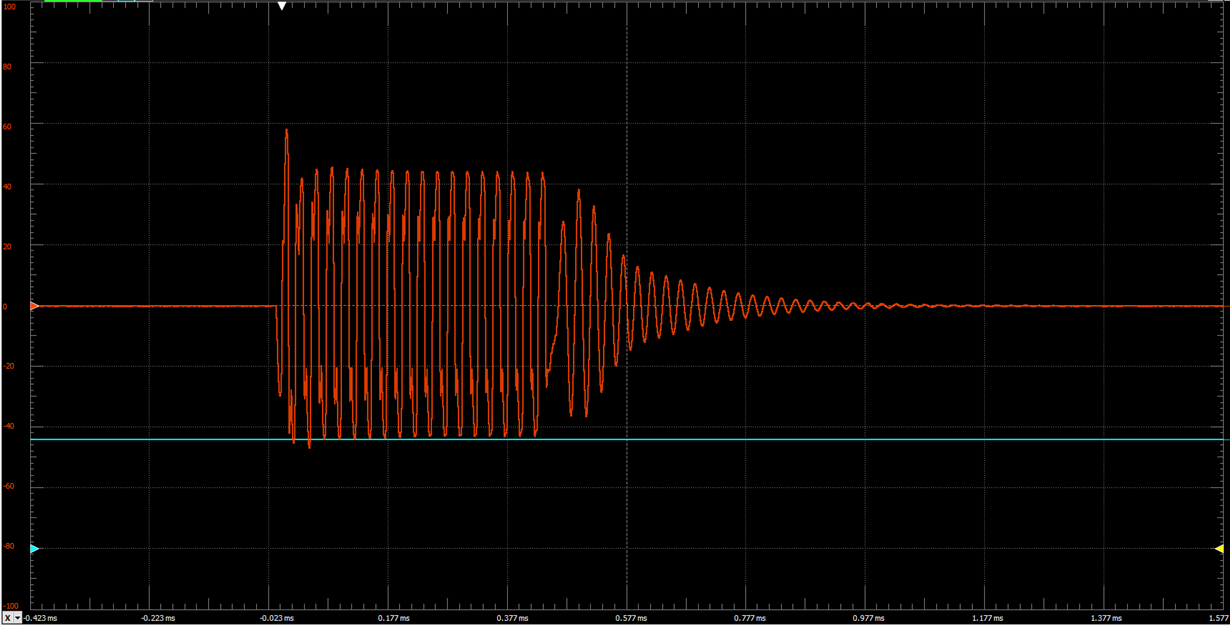Other Parts Discussed in Thread: MSP-EXP430F5529LP, PGA460, BOOSTXL-PGA460
I am having trouble getting reliable detection with the PGA460PSM-EVM module. From my understanding it should work well for human detection, however I am unable to confirm this with the evaluation module. I am wondering if I am doing something wrong or if simply this application is not possible with this hardware.
I have the PGA460PSM-EVM connected to the BoostXL board via UART and am testing with the GUI software. I am using an external 9V power supply.
Here is my setup. I have the transducer mounted about 2.2 meters above ground pointed downward about 35 degrees.
These are the results I get when I am stand 2 meters away from the transducer and take a reading. I am wearing a cotton shirt and shorts.
I am expecting to see a spike at 2m where I am standing but I don't see anything. Are these the results I should expect? I have tested with a flat piece of wood within a meter of the transducer and have been able to see results. I am just surprised because from my reading of the documentation from TI I should at least be getting something.
If I should be getting better results please let me know what things I should test. I have a fairly basic set up and am using the TI evaluation hardware so I am not sure what could be going wrong.
Thanks
-Josh



